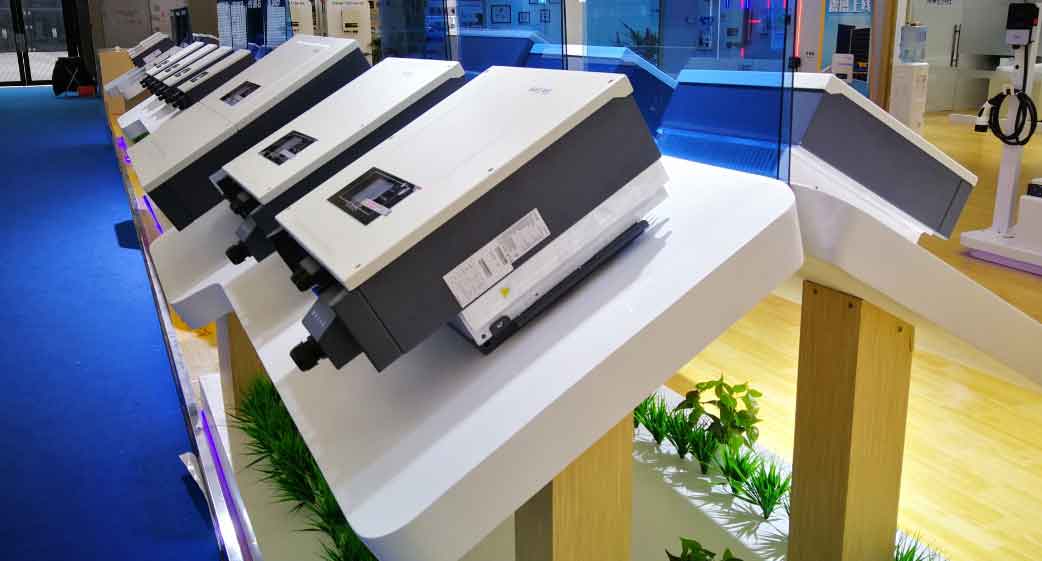With the rapid development of renewable energy, photovoltaic (PV) systems integrated with energy storage inverters have become crucial for stabilizing grid power quality. This paper presents an in-depth study of advanced control strategies for LCL-type three-phase grid-connected energy storage inverters, focusing on maximum power point tracking (MPPT), active damping control, and frequency-adaptive repetitive control techniques.

1. Enhanced MPPT Algorithm for Photovoltaic Systems
The output characteristics of photovoltaic cells under varying irradiance (G) and temperature (T) can be modeled as:
$$I_L = I_{ph} – I_o\left[\exp\left(\frac{q(U+I_LR_s)}{AkT}\right)-1\right] – \frac{U+I_LR_s}{R_{sh}}$$
Key parameters of the PV module are summarized in Table 1:
| Parameter | Value |
|---|---|
| Maximum Power (Pmax) | 266W |
| Open Circuit Voltage (Uoc) | 43.6V |
| Short Circuit Current (Isc) | 8.35A |
The proposed CS-INC hybrid MPPT algorithm combines cuckoo search global optimization with incremental conductance local search:
$$x_i^{t+1} = x_i^t + \alpha \oplus L(\beta)$$
$$\Delta P/\Delta U = -I/U \quad \text{(INC condition)}$$
2. LCL Filter Design and Active Damping Control
The three-phase LCL filter parameters are designed based on harmonic attenuation requirements:
$$L_1 = \frac{U_{dc}}{8\Delta I_{max}f_s} \geq 1.6mH$$
$$f_{res} = \frac{1}{2\pi}\sqrt{\frac{L_1+L_2}{L_1L_2C}} = 3558.8Hz$$
| Component | Value |
|---|---|
| Inverter-side Inductance (L1) | 2mH |
| Grid-side Inductance (L2) | 0.5mH |
| Filter Capacitance (C) | 5μF |
The active damping control strategy achieves equivalent damping effect without physical resistors:
$$G_{AD}(s) = \frac{1}{L_1L_2Cs^3 + (L_1R_2+L_2R_1)s^2 + (L_1+L_2+R_1R_2C)s}$$
3. Frequency-Adaptive Repetitive Control
The improved PI+repetitive control structure features:
$$G_{rc}(z) = \frac{Q(z)z^{-N/2}}{1-Q(z)z^{-N/2}}K_rz^MS(z)$$
Where frequency adaptation is implemented through fractional delay approximation:
$$z^{-F} \approx \sum_{k=0}^n h_k(F)z^{-k}$$
$$h_k(F) = \prod_{\substack{0\leq m\leq n \\ m\neq k}}\frac{F-m}{k-m}$$
4. Experimental Validation
The 10kW energy storage inverter prototype demonstrates excellent dynamic response:
| Condition | THD | Settling Time |
|---|---|---|
| Steady-state (50Hz) | 0.52% | 100ms |
| Frequency Variation (49.6Hz) | 0.46% | 110ms |
| Load Step Change (8kW→12kW) | 1.47% | 12.8ms |
The proposed control strategy maintains DC-link voltage stability within 2.29% deviation during 8kW load transitions, significantly outperforming conventional PI control (3.97% deviation). This research provides an effective solution for improving the power quality and operational reliability of grid-connected energy storage inverters in modern power systems.
